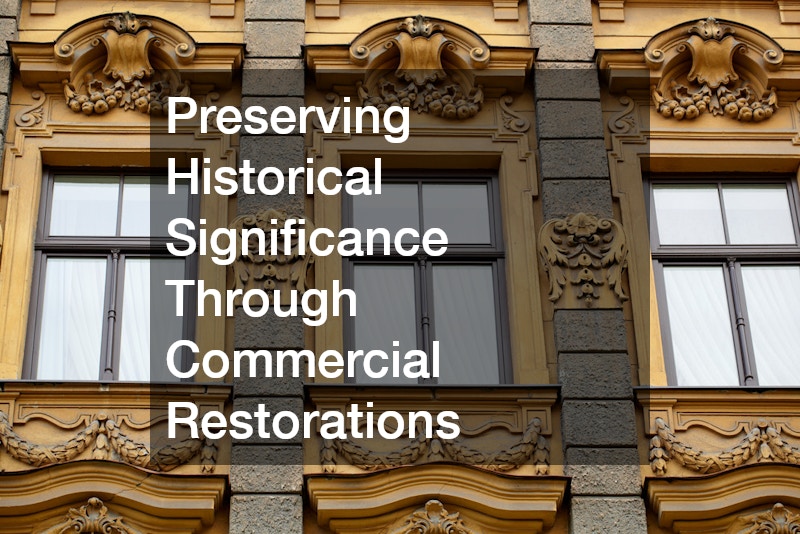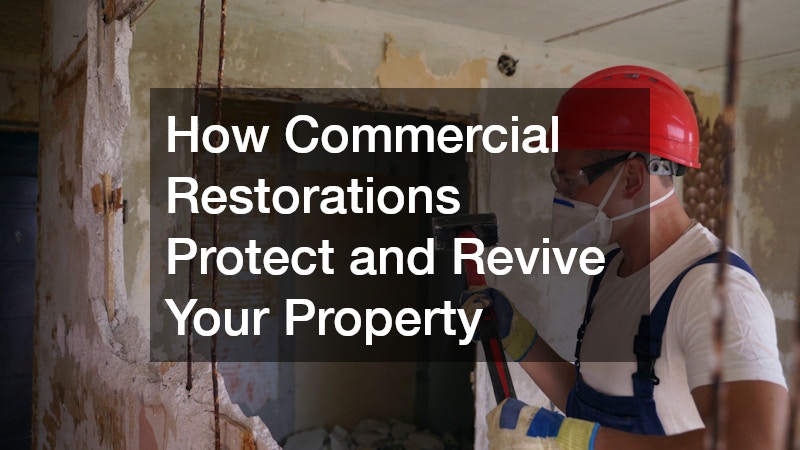In the bustling world of real estate and property management, maintaining your commercial property’s value and allure is crucial. Whether it’s because of the ravages of time or unexpected occurrences like fires and floods, properties inevitably face wear and tear. Commercial restorations play a critical role in reviving and safeguarding your valuable assets, ensuring they remain prestigious and functional. This comprehensive article delves into the multifaceted ways commercial restorations can benefit property owners, emphasizing the essential keyword “commercial restorations.
” Understanding the importance and breadth of these restorations provides property owners with the knowledge to maintain their properties with confidence and longevity.
Understanding the Scope of Commercial Restorations
Commercial restorations encompass a wide range of services aimed at returning properties to their former glory. These services include structural repairs, aesthetic improvements, and modernization efforts, depending on the specific needs of a building. With the evolution of building codes and standards, restorations may also involve significant compliance upgrades. Such upgrades ensure that older buildings meet contemporary safety and efficiency criteria, making them competitive in the market. Overall, the scope of commercial restorations is vast and tailored to each property’s unique requirements.
Another aspect of commercial restorations is their role in correcting and preventing further damage. Natural disasters, accidents, and neglect can compromise the integrity of a building, leading to more costly repairs if not addressed promptly. An effective restoration strategy should focus on addressing these issues before they escalate. By doing so, property owners can prevent scenarios that would otherwise lead to significant financial loss. In addition to restoring a building to its previous state, these efforts ensure a longer lifespan and better investment returns.
The Financial Benefits of Commercial Restorations
Investing in commercial restorations can yield substantial financial benefits for property owners. One of the most straightforward advantages is the increase in property value. When restorations include structural improvements, updates to environmental systems, and aesthetic enhancements, they can significantly raise a building’s worth. This increase often exceeds the initial investment, providing property owners with a strong return on investment. By keeping a building up-to-date and in pristine condition, owners ensure their asset remains a valuable part of their real estate portfolio.
In addition to increased property value, commercial restorations can lead to lower operating costs. Implementing modern technologies and energy-efficient systems reduces utility bills and maintenance expenses. For example, when outdated HVAC systems are replaced, energy consumption can drop, leading to immediate savings. Similarly, structural reinforcements minimize unexpected repairs, allowing for more predictable annual budgets. By proactively addressing these operational aspects, property owners can make their buildings more financially sustainable.
Another significant financial benefit of commercial restorations is enhanced tenant retention and attracting new clients. A well-maintained property appeals to potential renters who prioritize safety, comfort, and modern amenities. Existing tenants are also more likely to renew their leases due to improved facilities and lowered operational costs. Furthermore, satisfied tenants are often willing to pay higher rents, directly boosting the property owner’s income. Overall, these restorations create a win-win situation for both property owners and their occupants.
Enhancing Safety and Compliance Through Commercial Restorations
Safety is a paramount concern for any commercial property owner, and compliance with current building codes is critical. Commercial restorations often address gaps in safety protocols and construction standards, which might have been overlooked or evolved over time. With changes in regulations, especially concerning fire safety and earthquake resilience, properties must be up-to-date to avoid penalties and liabilities. Through comprehensive restorations, owners can ensure their buildings meet all necessary criteria. As a result, they provide a safer environment for tenants, customers, and visitors.
The process of enhancing safety extends beyond compliance; it actively contributes to risk management. Structural evaluations during restorations can identify and mitigate potential hazards unnoticed during regular maintenance. For example, reinforcing a building’s foundation not only prolongs its lifespan but also reduces the risk of collapse in an earthquake. Incorporating advanced security systems also deters crime and enhances the overall safety of the facility. Together, these steps lower the likelihood of accidents and liability claims, safeguarding both human and financial capital.
Preserving Historical Significance Through Commercial Restorations
Many commercial properties are steeped in historical and cultural significance, and preserving this heritage is a crucial aspect of restorations. Undertaking restoration efforts with respect for a building’s history can enhance its status and prestige. Skilled professionals use specialized techniques to retain original features while upgrading structural integrity and functionality. This balance between past and present allows buildings to maintain their character, attract tourists, and contribute to cultural education. Consequently, the historical value adds an intangible yet significant component to a property’s appeal.
Another aspect of historical commercial restorations is the potential for financial incentives from governmental and preservation organizations. Various programs encourage the restoration of heritage properties through tax credits, grants, and support services. By leveraging these resources, property owners can offset restoration costs and improve their returns on investment. Additionally, hotels, museums, and other tourist-dependent businesses benefit from the increased foot traffic these restored historical sites generate. As a result, maintaining historical elements can be both culturally fulfilling and economically advantageous.

